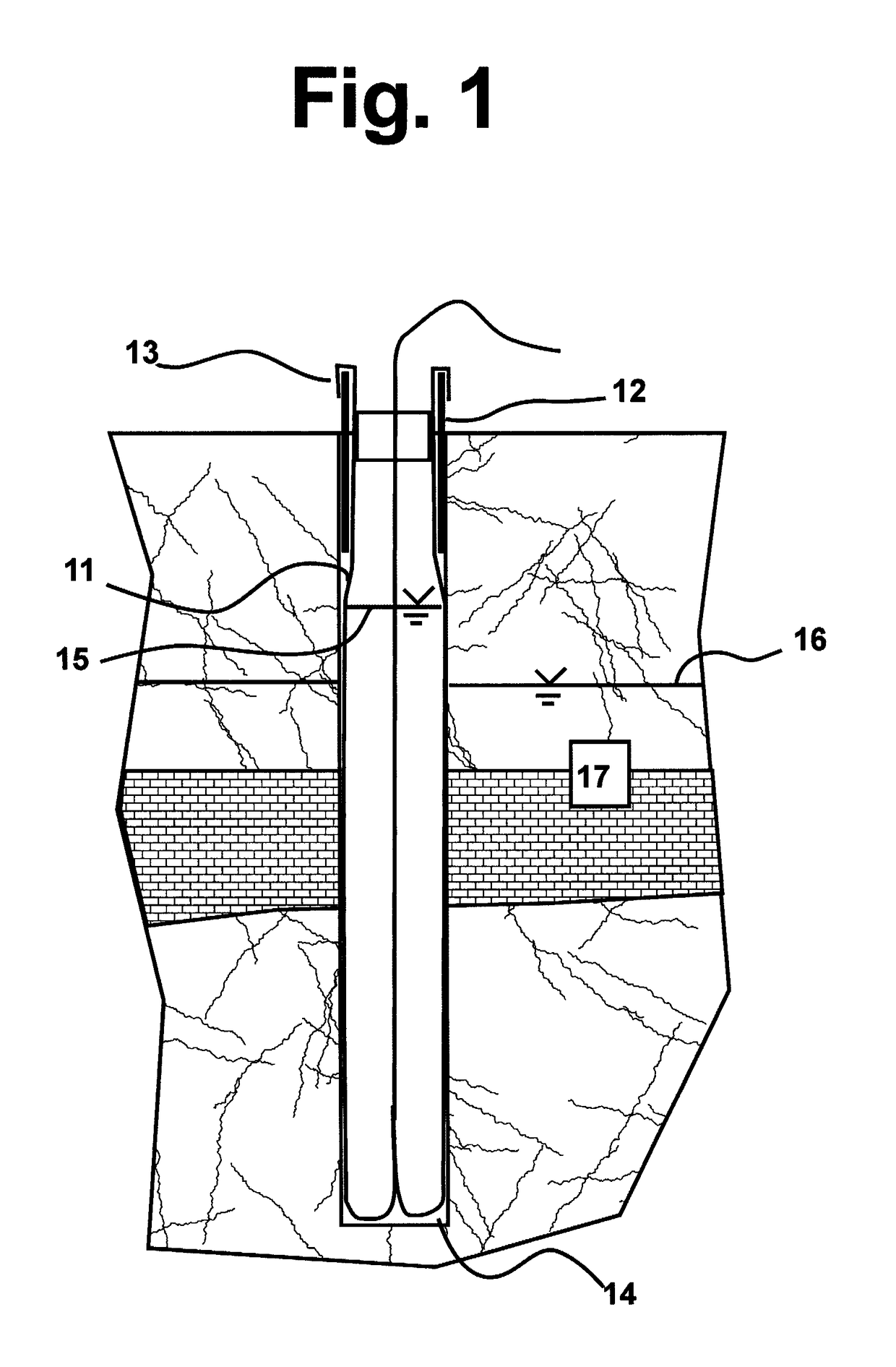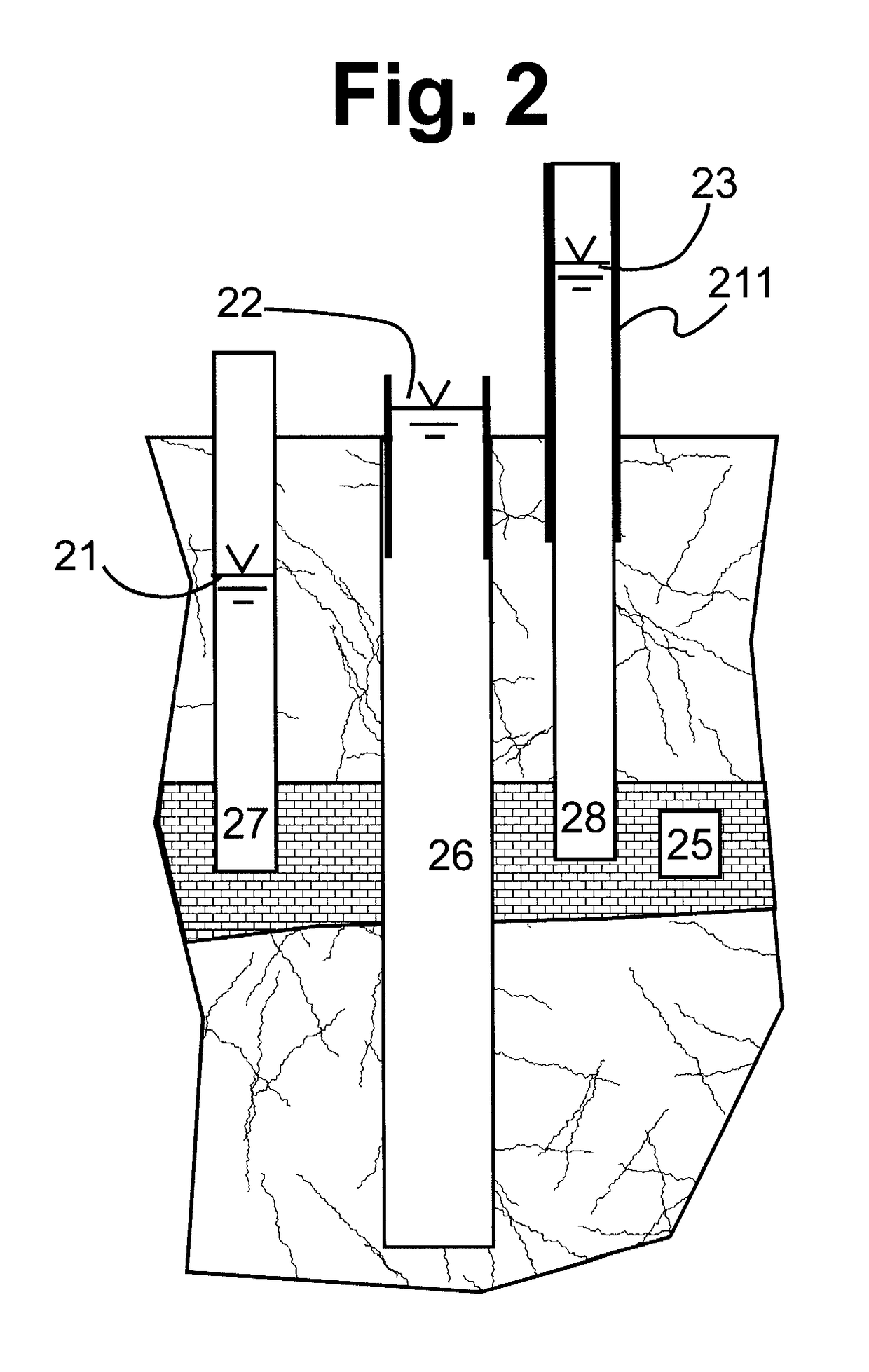Method for sealing of a borehole liner in an artesian well
a technology of artesian wells and boreholes, which is applied in the direction of earth drilling, fluid removal, borehole/well accessories, etc., can solve the problems of increasing the interior pressure of the water trapped inside the liner, and achieve the effect of avoiding the development of excessive pressur
- Summary
- Abstract
- Description
- Claims
- Application Information
AI Technical Summary
Benefits of technology
Problems solved by technology
Method used
Image
Examples
Embodiment Construction
Including the Best Mode for Practicing the Invention
[0017]FIG. 1 provides an example of an everting liner installation according to the prior art. Installations of flexible liners into boreholes, by the eversion of the liners, are disclosed in previous patents, such as my U.S. Pat. Nos. 6,283,209, 6,794,127, and 7,896,578, the teachings of which are incorporated here by reference. The liner 11 has been attached to the top of the casing 12 at juncture 13. The liner 11 in the borehole 14 is filled with water to the level 15, which level is above the existing water table 16 in the subsurface geologic formation 17. As the liner 11 descends the borehole, the water beneath the liner 11 and within the borehole 14 is displaced into available flow paths in the surrounding formation 17, allowing the liner to propagate by the liner's eversion at its lower end. The driving pressure to evert the liner is generated by the difference between the pressure head in the liner (due to elevated water le...
PUM
 Login to View More
Login to View More Abstract
Description
Claims
Application Information
 Login to View More
Login to View More - R&D
- Intellectual Property
- Life Sciences
- Materials
- Tech Scout
- Unparalleled Data Quality
- Higher Quality Content
- 60% Fewer Hallucinations
Browse by: Latest US Patents, China's latest patents, Technical Efficacy Thesaurus, Application Domain, Technology Topic, Popular Technical Reports.
© 2025 PatSnap. All rights reserved.Legal|Privacy policy|Modern Slavery Act Transparency Statement|Sitemap|About US| Contact US: help@patsnap.com



